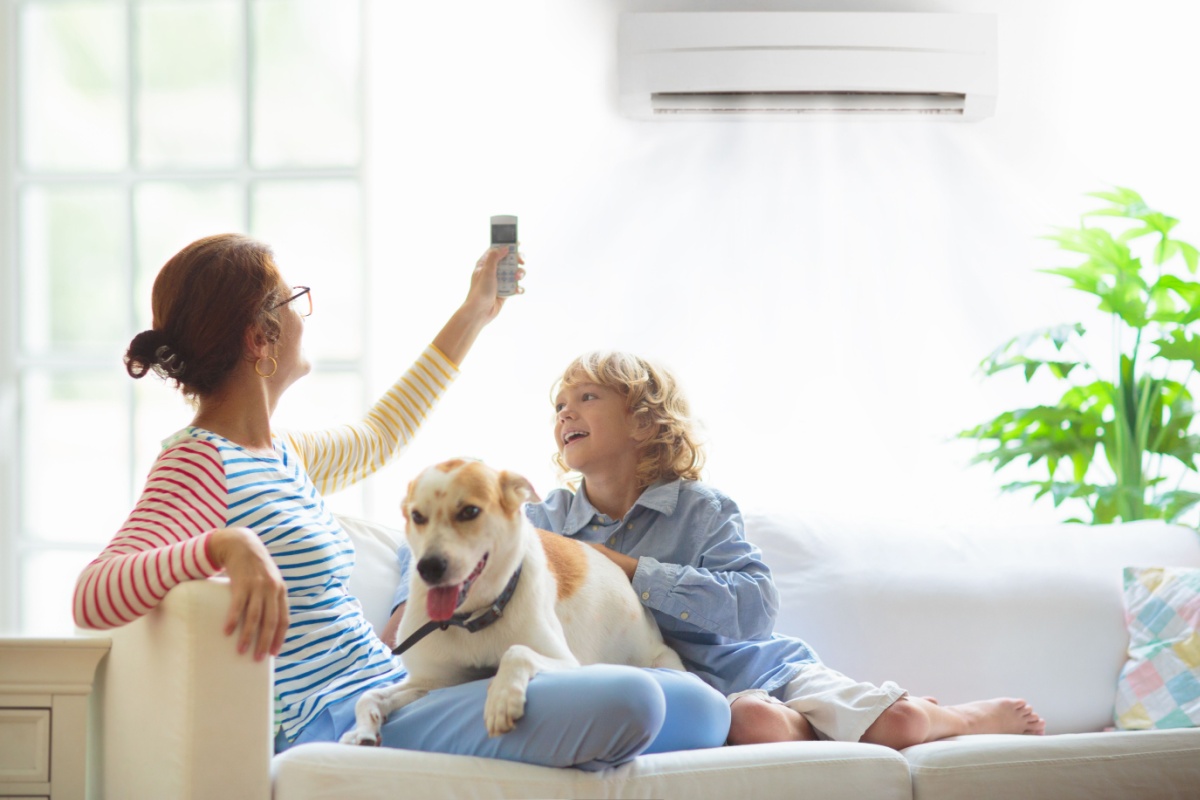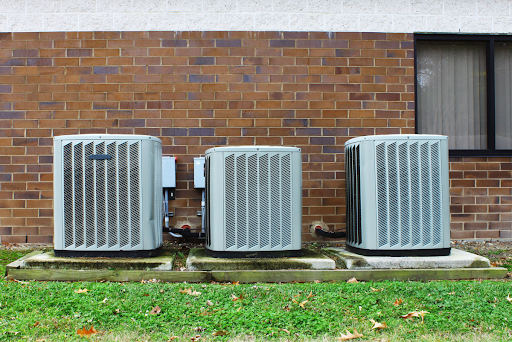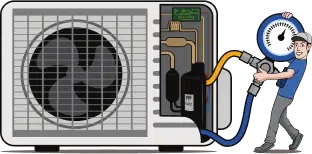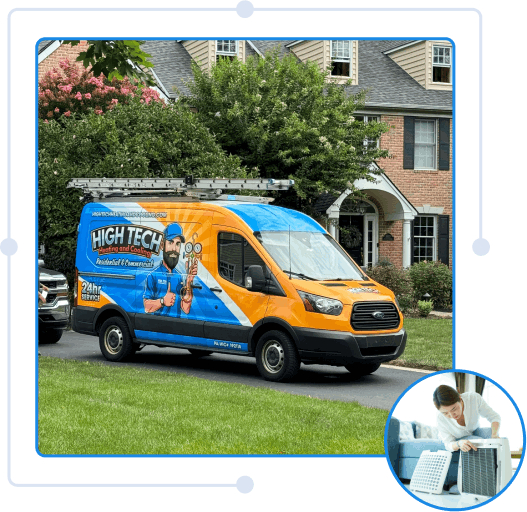The last thing you want to deal with during the warm summer months or the winter chill is an HVAC system that can’t deliver the results when you need them the most. From a furnace that’s huffing and puffing to an AC unit barely blowing cool air, these systems wear down just like any hardworking part of the house. They push through hot summers, freezing winters, wild temperature swings, and more dust than anyone wants to admit. Over time, they get tired, and when they do, they let you know in all sorts of noisy, leaky, dusty, and downright annoying ways.
The High Tech Heating & Cooling team has seen it all over the years. Every rattle, every spike in your energy bill, every suspicious puddle beneath the air handler tells a story of what’s going on inside your HVAC system. If you’ve got the same HVAC hiccup cropping up over and over again, it’s probably one of the big ones. Let’s dig into the top 10 most common HVAC issues that pop up in homes and talk about how you can troubleshoot or decide when it’s time to call in backup.
Knowing How to Spot the Most Common HVAC Issues for Homes
Getting ahead of HVAC problems is about knowing what signs to look for. Whether it’s weak airflow, odd noises, or a spike in your electricity bill, these little red flags are your system’s way of saying, “Help me.” Below are the most common HVAC problems we see in Garnett Valley homes and what each one means for your heating and cooling system.
Clogged Air Filters

Air filters catch more than just dust; they trap dirt, mold spores, debris, and even the occasional insect. When they clog up, airflow tanks and your home comfort follow soon after. Your system has to work harder, sacrificing efficiency and driving your utility bills through the roof. Swap your air filter regularly to protect your blower motor and compressor from unnecessary wear and tear.
Refrigerant Leaks
Low refrigerant usually means one thing: you’ve got a leak somewhere that you need to deal with. Unaddressed leaks bring uneven cooling, a spiking electric bill, and sometimes even ice on your evaporator coils. The fix isn’t just a refill; it’s finding the root of the problem and sealing it up before you lose more energy or damage the system’s pressure balance.
Electrical Issues
Loose wires, faulty switches, bad relays, or a fried circuit breaker can bring your HVAC system to a screeching halt. These kinds of hiccups are not only frustrating, but they can also be dangerous. Heat exchangers and condensers rely on a steady power supply. If you smell burning or notice inconsistent power, shut it down and call a professional to inspect it.
Poor Airflow
If your home feels stuffy or your vents are whispering instead of whooshing, airflow’s the issue. Causes range from clogged ducts and dirty fans to a failing air handler or capacitor. This is one of those problems that affects your indoor air quality, temperature consistency, and your overall energy use.
Unusual Noises
Clanking. Humming. Banging. Squealing. If your HVAC system sounds like it’s auditioning for a horror film, something’s out of sync. Bearings, belts, motors, or any moving part that’s out of alignment or low on lubricant can trigger strange sounds. Catch it early, and you’ll save yourself a costly repair down the road.
Frozen Evaporator Coils
When your coils freeze over, airflow drops and your system might run nonstop while your home still feels hot. Low refrigerant levels, dirty filters, or airflow restrictions can cause this issue. Ice might look harmless, but it can crack parts, kill your compressor, and flood your basement if left unchecked.
Blower Motor Issues
The blower motor is the muscle behind your airflow. If it’s struggling or, worse, dead, your rooms will feel uneven in temperature or stay stubbornly hot or cold. Blower motors suffer from wear, dust buildup, or electrical failure. A proper inspection can pinpoint if it’s a bad capacitor, a loose belt, or just old age.
Ductwork Issues
Leaky ducts lose more than air; they leak your hard-earned cash. Cracks, gaps, or poorly insulated ductwork reduce your system’s cooling capacity, resulting in uneven heat distribution and temperature inconsistencies throughout the house. Proper sealing and insulation go a long way toward energy conservation.
Water Leaks
Water pooling around your furnace or air handler isn’t just an eyesore; it’s a threat to your home. Poor drainage, a clogged condensate pump, or a cracked pipe can lead to serious water damage, especially in the attic or basement. Moisture can breed mold, rust out components, and ruin nearby drywall.
DIY Vs. Professional Repairs for Your HVAC Problems

When your heating system acts up or your air conditioning system wheezes out lukewarm air, it’s tempting to grab a wrench, watch a few videos, and go full DIY. But here’s the catch—HVAC systems aren’t your average home improvement project. They’re a maze of refrigerant lines, gas valves, condensers, compressors, and electrical components tied into everything from the thermostat to the ductwork. One misstep, and you’re risking more than just a broken unit; you’re flirting with carbon monoxide leaks, electrical fires, and serious water damage. Not to mention, the second you tamper with certain parts, you could kiss that warranty goodbye. When it comes to keeping your indoor air quality safe and your home climate comfortable, calling a licensed technician is the move. Here’s why the DIY route is more risk than reward:
- Electrical Hazards: Mishandling a capacitor, circuit breaker, or relay could lead to electrocution or damage to critical wiring.
- Refrigerant Exposure: Refrigerant leaks aren’t just bad for the environment—they pose serious health risks and require EPA-certified handling.
- Gas Leaks & Odor Risks: Improper repairs to gas lines or pilot lights can create dangerous pressure buildups or leaks.
- Voided Warranty: DIY fixes can breach manufacturer terms, leaving you stuck footing the bill when the system fails.
- Hidden Water Damage: Incorrect drainage pipe setups or pump handling can lead to mold, corrosion, or basement flooding.
- Incorrect Diagnosis: Without the tools to read sensor outputs or thermal readings, you might fix the symptom but not the root cause.
- Pricey Repeat Repairs: What starts as a quick DIY “fix” often leads to a costlier professional repair later.
Schedule Your Next HVAC Repair Appointment in Garnett Valley, PA, Today
You can’t always control the weather, but you can take control of how your home handles it. Whether your HVAC system is moaning with noise, freezing over, or blowing hot air when it should cool, waiting only makes things worse and more expensive. A small leak today could become a full system shutdown next week. A dirty air filter could be dragging down your system’s efficiency while cranking up your utility bill. It’s never just one thing. It’s a chain reaction. And the longer it goes unchecked, the more links snap.
At High Tech Heating & Cooling, we’re your neighbors who take pride in giving you honest HVAC maintenance, fast AC repair, and real solutions. We’ve handled everything from dusty duct cleanings to heat pump replacements. When you call, you get a technician who knows what to look for and how to fix it. Give us a call now to schedule your inspection and get your HVAC system back on track.





